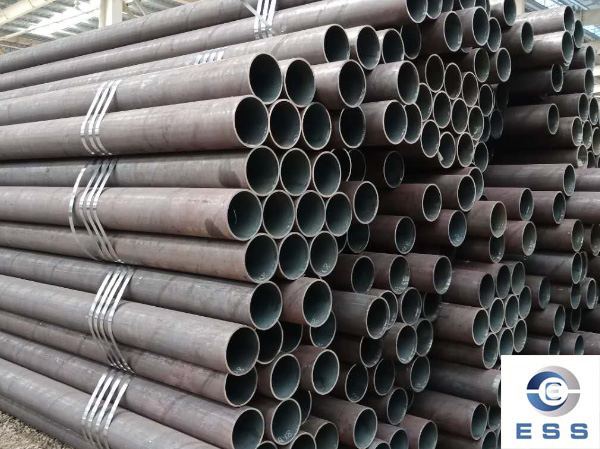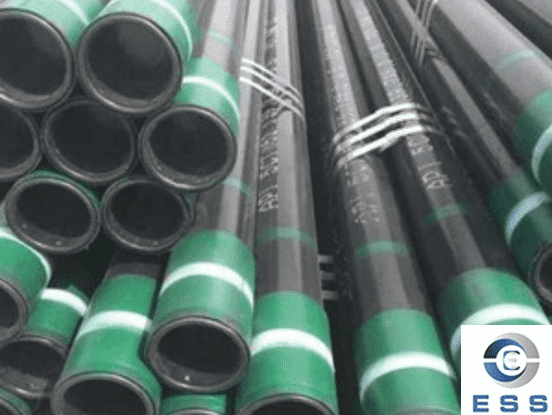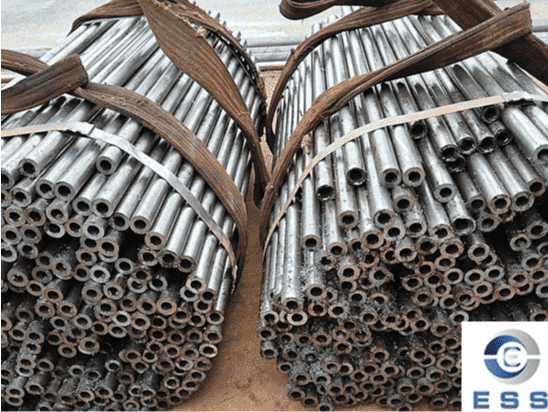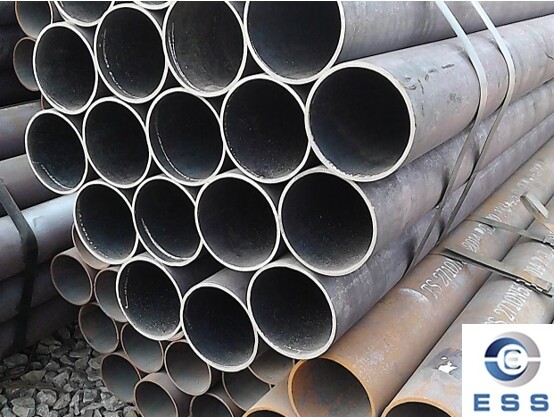Why do seamless pipes need to be deburred?
Chips and extremely fine microscopic metal particles appear on the surface of seamless steel pipes, called burrs. The more faults it has, the lower its quality standards will be. The main types of burrs include flash burrs, sharp corner burrs, spatter, etc.

One of the surface defects of seamless steel pipes is the uneven flash at the end of cold-cut, hot-saw or flame-cut steel. Welded steel pipe sometimes has excess metal extruded from the weld. The thickness of the end burrs of cold cut products depends on the gap between the cutting edges. Generally, products are allowed to have a certain height of burrs; however, the internal and external burrs of seamless steel pipes must be scraped off.
The reasons for burrs in seamless steel pipes are:
(1) The cutting blade is dull and the gap is too large; the saw blade is dull or improperly installed;
(2) The punch is worn or improperly installed;
(3) Improper flame cutting operation;
(4) The welding system is not standardized.
There is currently no effective way to eliminate this problem during the production process, so in order to ensure the design requirements of seamless steel pipes, engineers have to work hard to eliminate them in the later stage. To date, a variety of different deburring methods and equipment have emerged for different steel pipe products.
How to remove burrs from seamless pipes
1) Manual deburring
It is the most commonly used method, using files, sandpaper, grinding heads, etc. as auxiliary tools. There are hand files and air files.
Features: The labor cost is relatively expensive, the efficiency is not very high, and complex cross holes are difficult to remove. The technical requirements for workers are not very high, and it is suitable for products with small burrs and simple product structures.
2) Mold deburring
Deburring using production dies and punches.
Features: A certain mold (rough mold + fine mold) production fee is required, and a forming mold may also be required. It is suitable for products with simple parting surfaces, and its efficiency and deburring effect are better than manual work.
3) Sanding and deburring
This deburring method includes vibration, sandblasting, roller, etc., and is currently used by many companies.
Features: There is a problem that the removal is not very clean, and subsequent manual processing of residual burrs or other deburring methods is required. Suitable for small products in large quantities.
4) Frozen deburring
The burrs are rapidly embrittled by cooling and then blasted with projectiles to remove the burrs.
Features: The equipment price is around 200,000 or 300,000 yuan; suitable for products with smaller burr wall thickness and small products.
5) Hot air deburring
Also known as thermal deburring and explosion deburring. By introducing some flammable gas into the equipment furnace, and then through the action of some media and conditions, the gas explodes instantly, and the energy generated by the explosion is used to dissolve and remove burrs.
Features: The equipment is expensive, the operation technology requires high requirements, the efficiency is low, and the side effects include rust and deformation; it is mainly used for some high-precision parts, such as automotive and aerospace precision parts.
6) Engraving machine deburring
Features: The equipment is not very expensive, suitable for simple space structures, and the required deburring locations are simple and regular.
7) Chemical deburring
Using the principle of electrochemical reaction, parts made of metal materials can be automatically and selectively deburred.
Features: Suitable for internal burrs that are difficult to remove, and suitable for small burrs (thickness less than 7 wires) on pump bodies, valve bodies and other products.
8) Electrolytic deburring
An electrolytic machining method that uses electrolysis to remove burrs from metal parts.
Features: The electrolyte is corrosive to a certain extent, and electrolysis will occur near the burrs of the parts. The surface will lose its original luster, and even affect the dimensional accuracy. The workpiece should be cleaned and rust-proofed after deburring. Electrolytic deburring is suitable for deburring hidden parts of intersecting holes or parts with complex shapes. The production efficiency is high, and the deburring time generally only takes a few seconds to tens of seconds. Suitable for deburring gears, connecting rods, valve bodies, crankshaft oil passages, etc. and rounding sharp corners.
9) High pressure water jet deburring
Using water as the medium, the instantaneous impact force is used to remove burrs and flash generated after processing, and at the same time achieve the purpose of cleaning.
Features: This equipment is expensive and is mainly used in the heart of automobiles and hydraulic control systems of construction machinery.
10) Ultrasonic deburring
Ultrasonic produces instant high pressure to remove burrs.
Features: Mainly for some microscopic burrs. Generally, if you need to observe the burr with a microscope, you can try to remove it with ultrasonic waves.
Read more: Difference between seamless pipe and seam pipe













 Eastern Steel Manufacturing Co.,Ltd not only improve product production and sales services, but also provide additional value-added services. As long as you need, we can complete your specific needs together.
Eastern Steel Manufacturing Co.,Ltd not only improve product production and sales services, but also provide additional value-added services. As long as you need, we can complete your specific needs together.










